
Alok Menghrajani
Previously: security engineer at Square, co-author of HackLang, put the 's' in https at Facebook. Maker of CTFs.
This blog does not use any tracking cookies and does not serve any ads. Enjoy your anonymity; I have no idea who you are, where you came from, and where you are headed to. Let's dream of an Internet from times past.
Home | Contact me | Github | RSS feed | Consulting services | Tools & games
I recently built crossabble, a free web word puzzle game. I was surprised by the number of edge cases I had to take into account. This post is based on my developer log.
Crossabble is a browser game: html, css, and javascript. The javascript part is quite minimal and trivial – I spent most of my time on css, polishing the game’s look and feel. I’m primarily a backend software engineer – when working on frontends, I’m punching a little above my weight.
My goal for Crossabble is to have a game that works well across all common modern web environments: laptops, tablets, phones, in landscape and portrait mode, etc. I own many devices, it however takes a lot of discipline to test each and every change with each and every device, browser, and orientation combination. Backend engineering seems simpler in this respect.
Virtual Keyboard
When browsing with touch devices, most web word games re-implement a virtual keyboard instead of using the device’s native one. Some notable examples, New York Times’ Wordle:
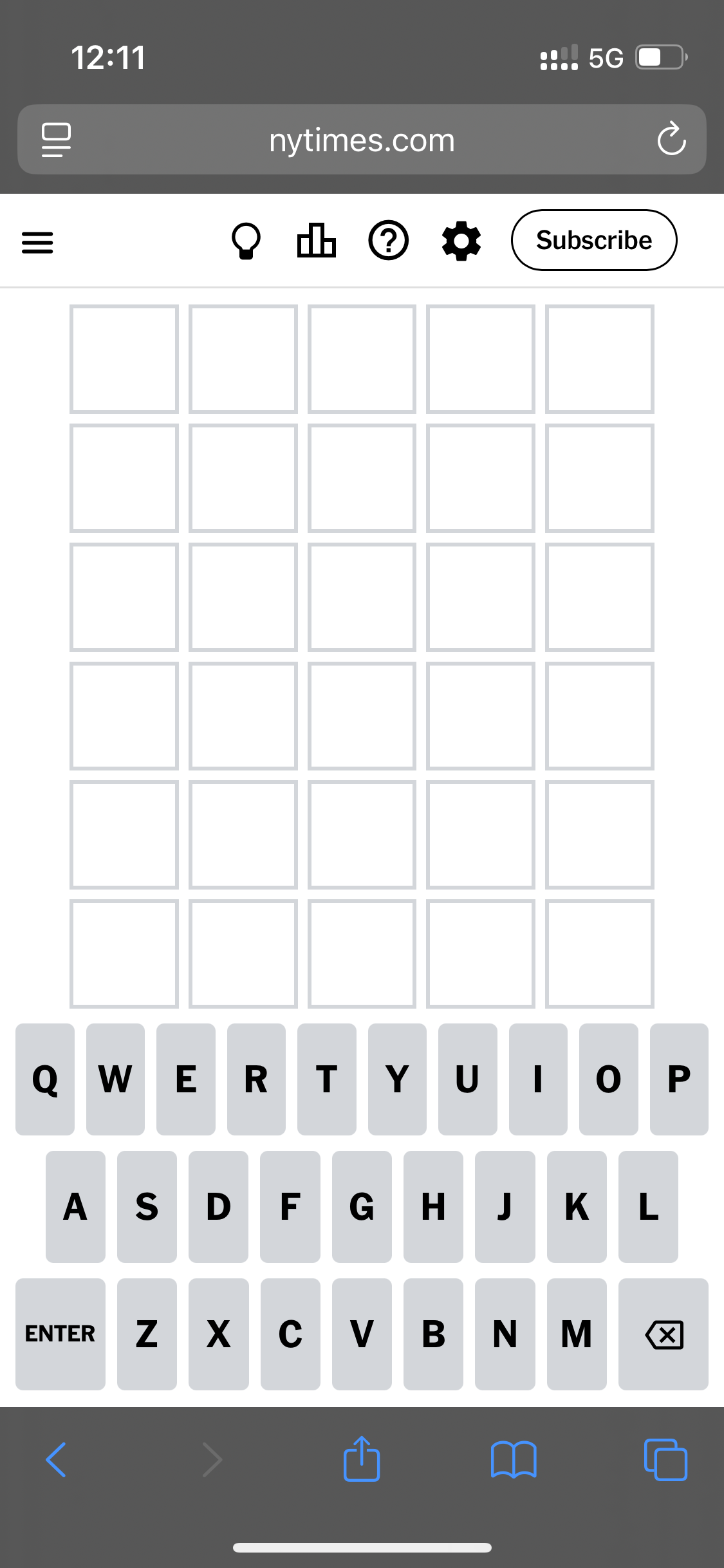
New York Times’ Mini Crossword:
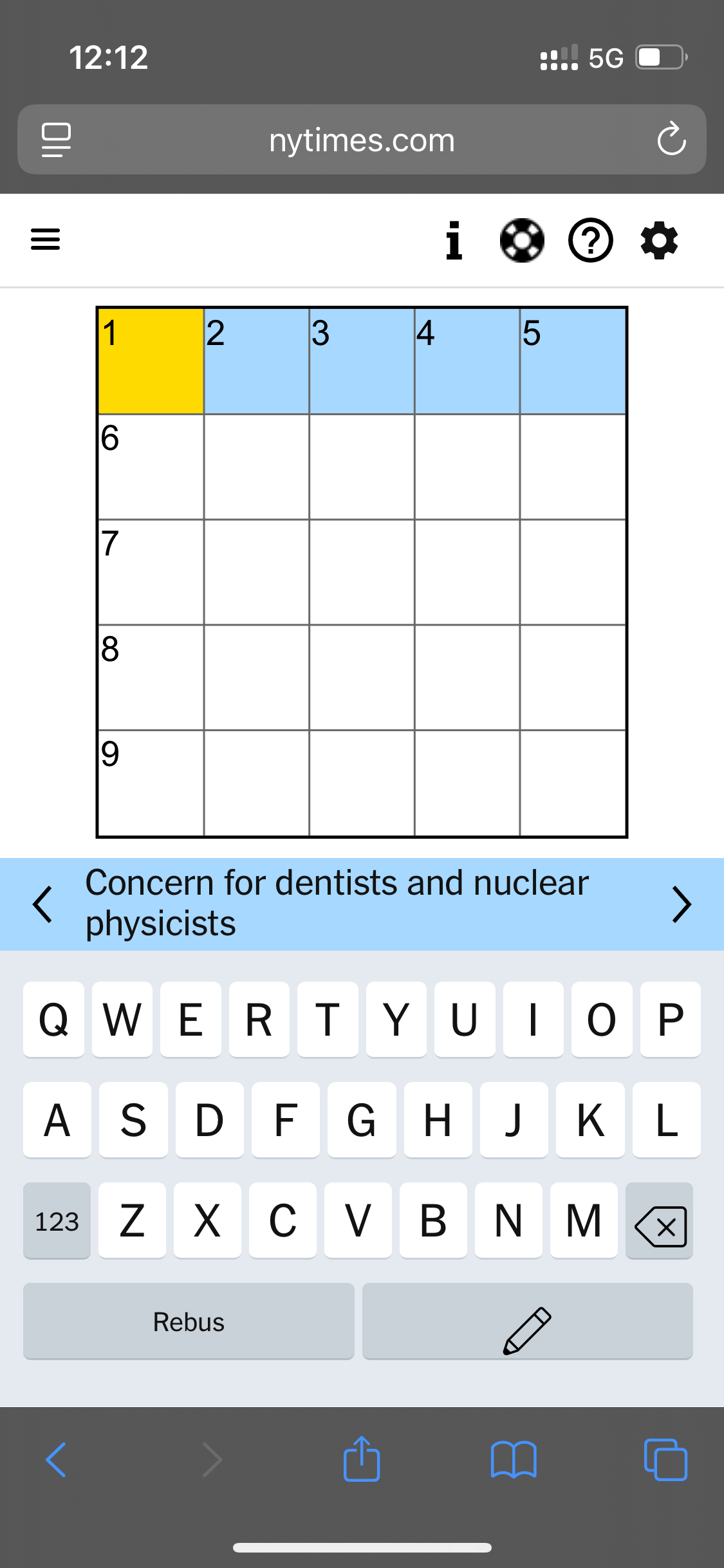
The Atlantic’s Bracket City:
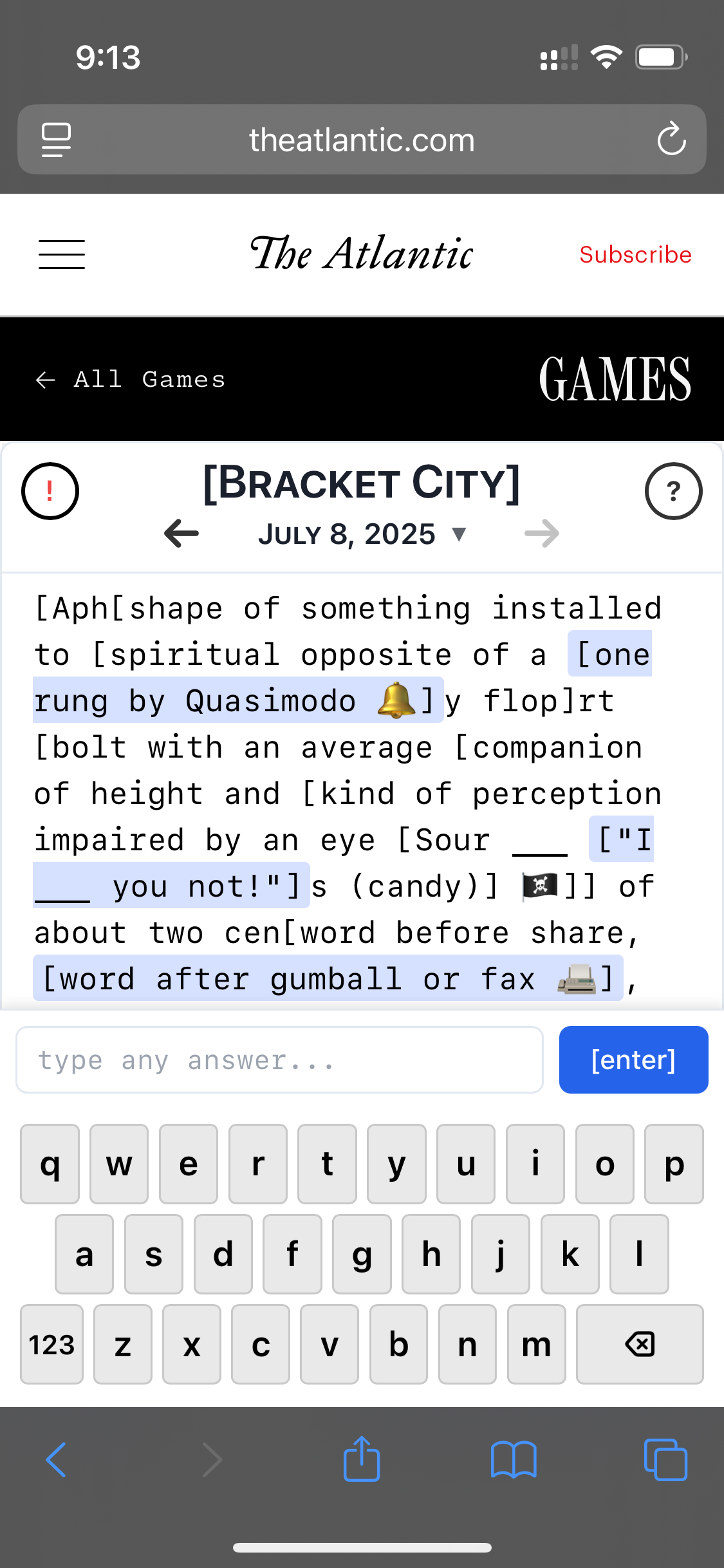
Some of these implementations are however buggy. For example, Wordle mishandles touch events and records the wrong letter when quickly typing adjacent letters, an issue which was brought up on r/wordle about a year ago:
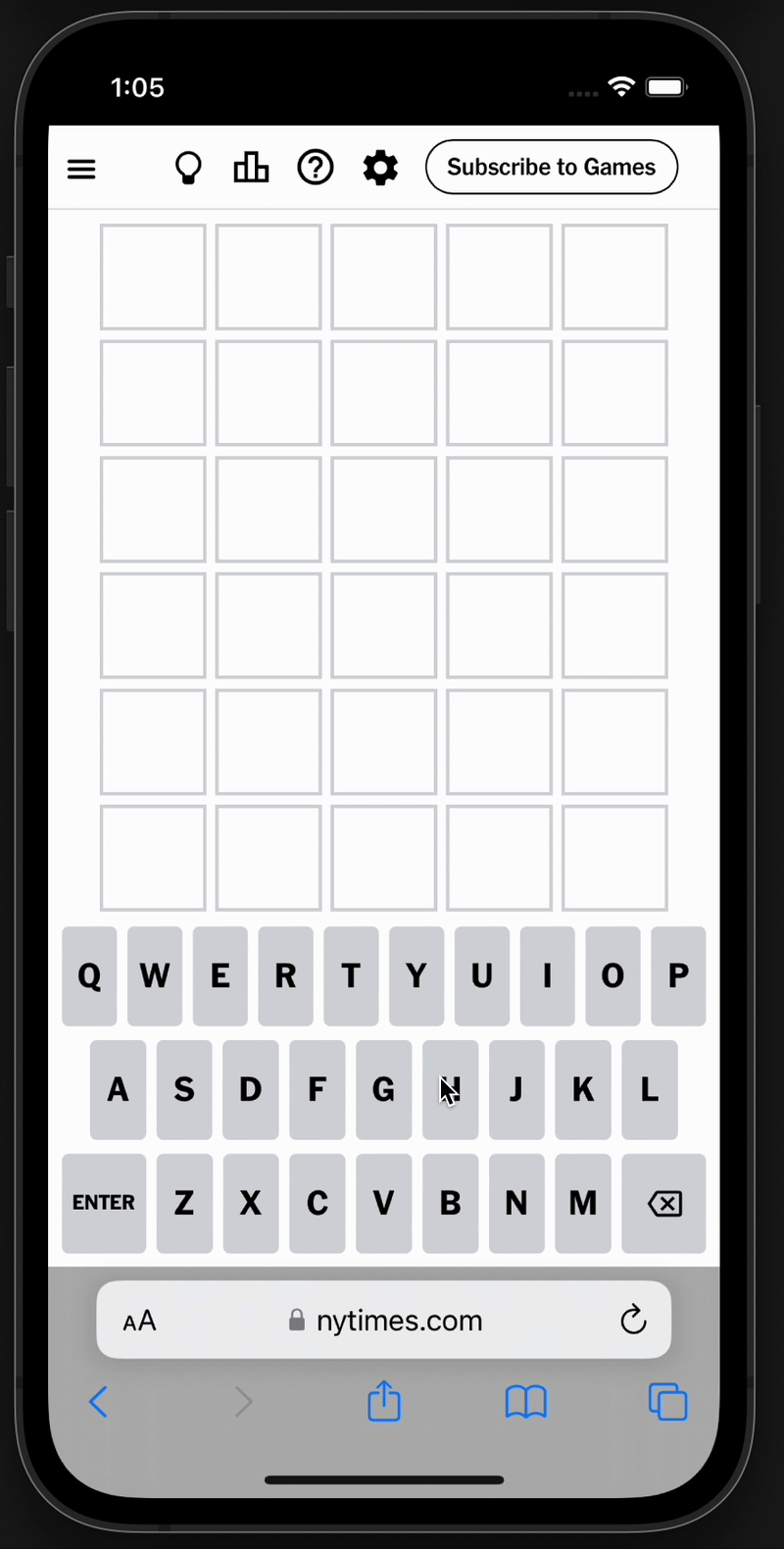
Besides potential bugs, re-implementing the virtual keyboard has several downsides:
- The keyboard layout might not match the user’s preference. There’s no browser API to query the user’s preferred keyboard layout. It can be quite annoying for someone used to one keyboard layout to have to type on a different layout.
- The color might not match the native interface.
- The spacing between keys might not match the native interface.
- The interface might not reflect features available in the native interface, such as speech-to-text or swipe. Some of these features might be important in terms of accessibility.
- Subtle other differences can make the re-implementation feel off, inferior, or simply different.
Knowing these issues, I initially attempted to use the native virtual keyboard. There are multiple possible approaches to achieve the look and feel of filling boxes. I tried using one input field per letter which has many hard to solve quirks. I then tried using hidden input fields with somewhat better results.
I was however unhappy with the native keyboard:
- The keyboard takes too much screen space. Several keys are not needed for my game (e.g. shift, space, numbers, emojis).
- The user gets suggestions (even with
autocomplete="off"). These suggestions don’t respect the field’smaxlengthattribute. Text suggestions can be disabled by making the field a hidden password field with some caveats. - It’s a pain to account for the keyboard’s size (there doesn’t seem to be
any css unit similar to
svhwhich takes the native virtual keyboard size into account).
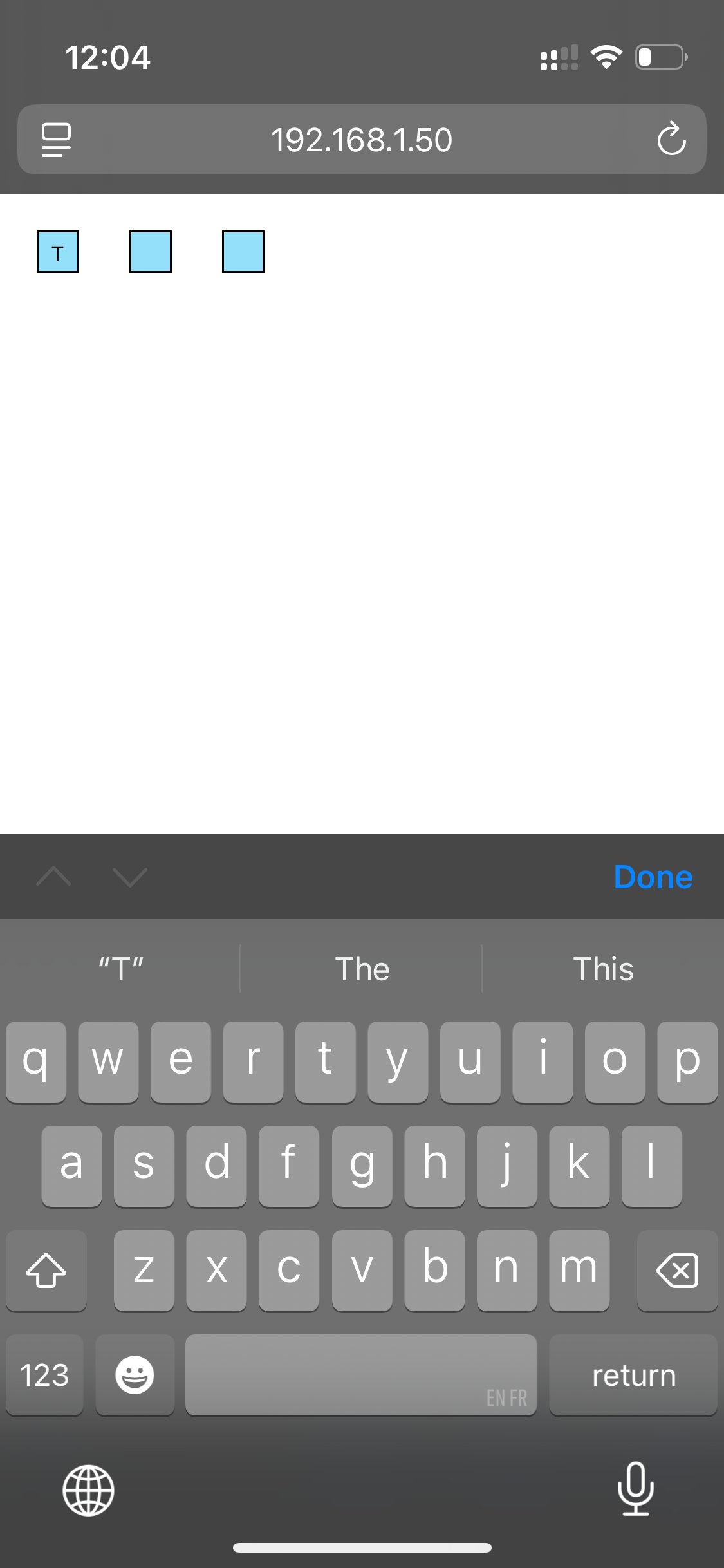
Reluctantly, I re-implemented a virtual keyboard – a less buggy version than what’s out there hopefully.
During these experiments, I did run into and filed a Chrome bug in addition to reporting that input field suggestions should perhaps take the field maxlength into account.
Chrome refresh issue
While trying to build an accurate web interface, I noticed that hitting refresh in Chrome sometimes moves things around. I didn’t immediately realize that I had content which was wider than the page and it was the scrollbar position hopping around (it’s unfortunate that scrollbars are hidden by default nowadays) and I was left confused for a bit.
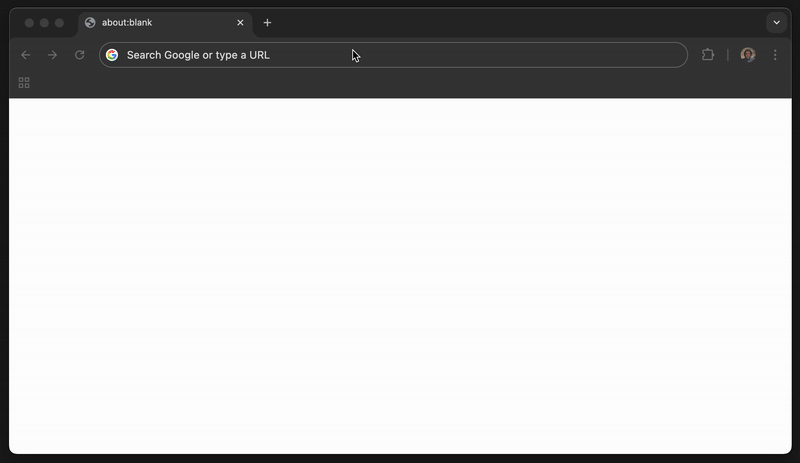
Undesirable text nodes
This file displays 9 squares which should be contained inside the green box. Depending on the window size, the squares however overflow:
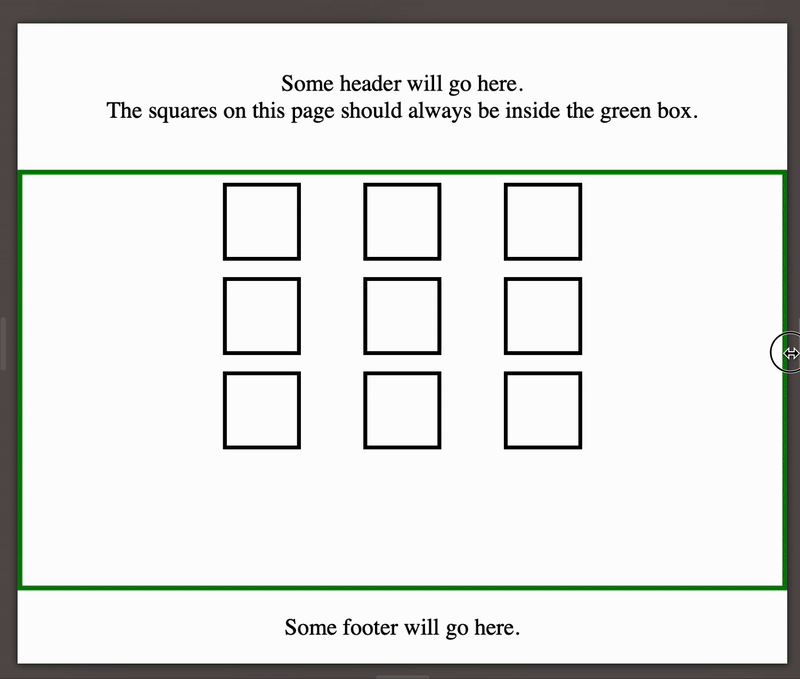
The overflow is caused by empty nodes taking up height. The empty nodes were added by the auto-formatter – you would think that a code formatter wouldn’t have any side effects!
I found a couple ways to work around this issue:
- Don’t auto-format the file on save
- Use some javascript to remove empty text nodes
- Set the font-size to 0
Allocating enough space for clues
The New York Times’ Mini Crossword grid shrinks when the clue is too long. This is caused by not allocating enough space for the clue area:
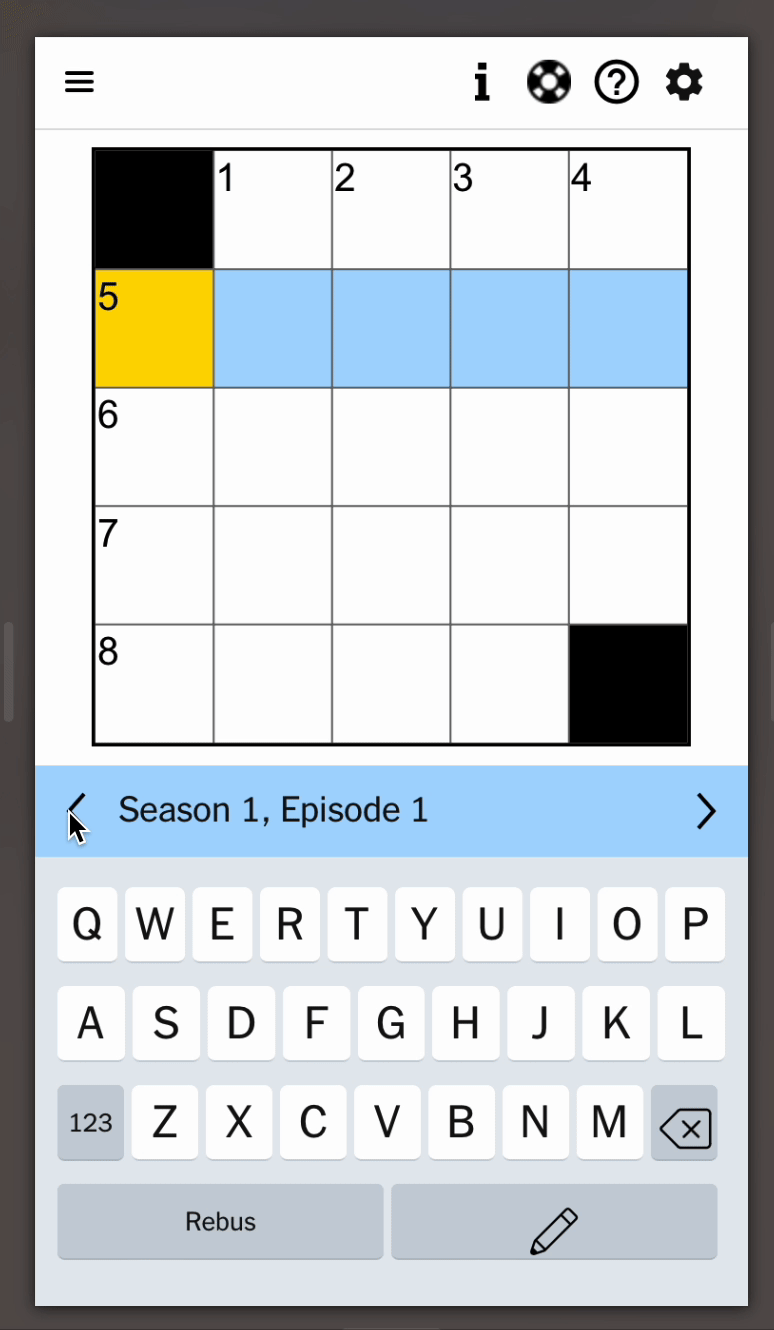
I avoid this situation by using a clever trick with css grids. Several <div>
elements can be assigned the same grid coordinates, causing them to overlap.
Visibility or opacity can then be used to pick which clue is shown.
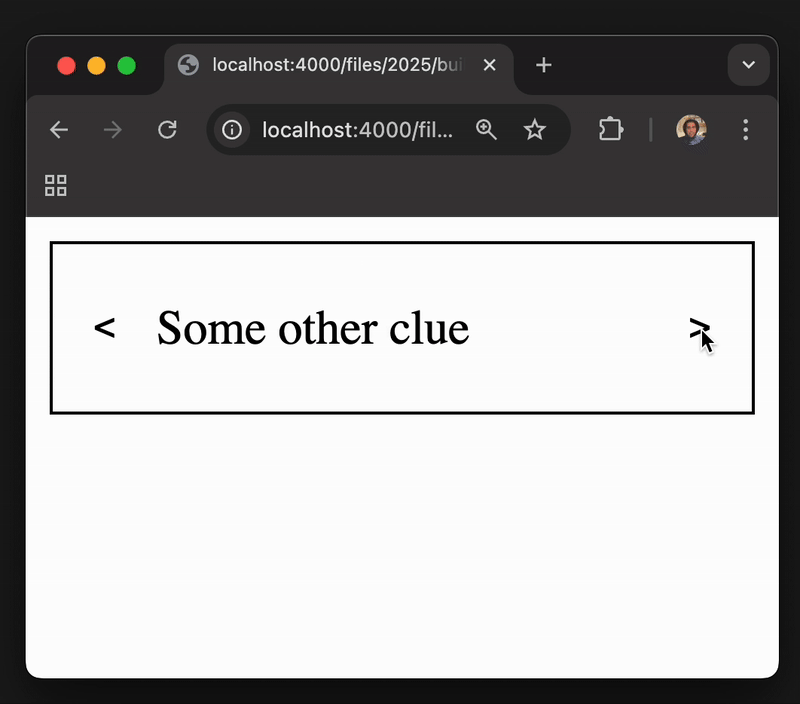
Notifying users and DAU NaN
Given that my puzzle is released on a weekly basis, some form of notification might be useful to remind people to come back and play. I however believe the web is a better place when sites don’t track their users. So I didn’t want to collect people’s email addresses or require them to create an account.
Instead, I created a simple way for users to add a calendar reminder to their own calendar. They can then delete the reminder whenever they wish. Users can also subscribe to the RSS/Atom feed, although I’m not sure if anyone is still using RSS/Atom feeds.
I call my philosophy of not tracking users “DAU NaN”. I know a small minority of other people share this philosophy about online activity tracking.
Instead of showing ads, users can support me via a buymeacoffee button.
Infrastructure
To wrap up these notes, I’ll briefly cover the infrastructure. In order to minimize costs and maximize availability, the site is generated using a custom script, akin to a static site generator. The code is hosted in a private GitHub repo, but can easily be relocated anywhere. The static site is served by Cloudflare, and again, I can easily relocate to some other service if needed.
I have the ability to draft puzzles ahead of time, to be released on a specific schedule – a Cloudflare worker regenerates all the static pages on a weekly basis.
Crafting puzzles is the most time consuming part of this project – which is fine as long as I’m enjoying crafting puzzles. I do have a helper tool to help me with this process and plan to expand this tool over time.
That’s it for now, do share with me if you think I could have done things differently or if you see any areas for improving the game!